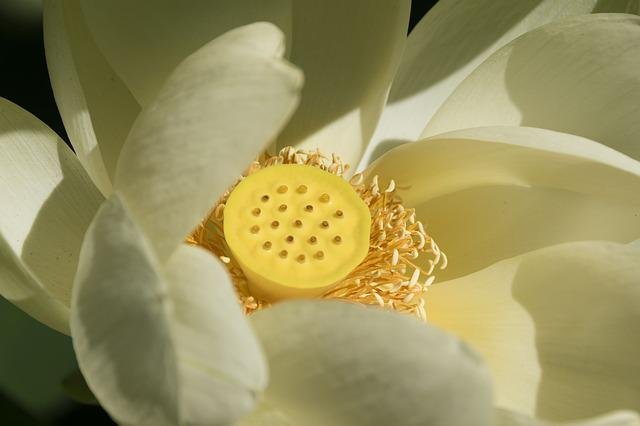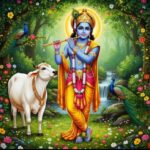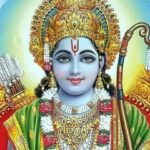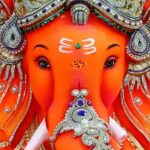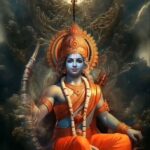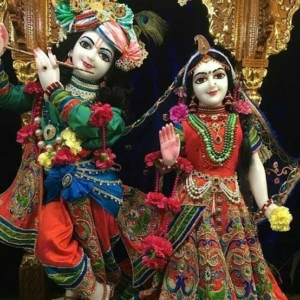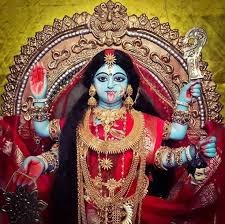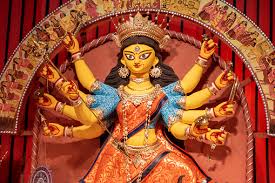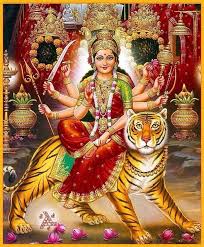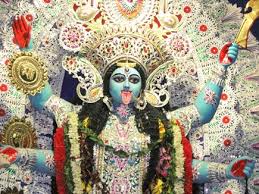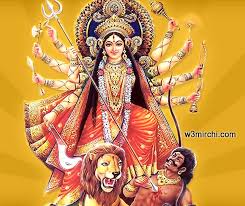1.#तमसानदी : अयोध्या से 20 किमी दूर है तमसा नदी। यहां पर उन्होंने नाव से नदी पार की।
2.श्रृंगवेरपुरतीर्थ : प्रयागराज से 20-22 किलोमीटर दूर वे श्रृंगवेरपुर पहुंचे, जो निषादराज गुह का राज्य था। यहीं पर गंगा के तट पर उन्होंने केवट से गंगा पार करने को कहा था। श्रृंगवेरपुर को वर्तमान में सिंगरौर कहा जाता है।
3.#कुरईगांव : सिंगरौर में गंगा पार कर श्रीराम कुरई में रुके थे।
4.#प्रयाग: कुरई से आगे चलकर श्रीराम अपने भाई लक्ष्मण और पत्नी सहित प्रयाग पहुंचे थे। कुछ महीने पहले तक प्रयाग को इलाहाबाद कहा जाता था ।
5.#चित्रकूट : प्रभु श्रीराम ने प्रयाग संगम के समीप यमुना नदी को पार किया और फिर पहुंच गए चित्रकूट। चित्रकूट वह स्थान है, जहां राम को मनाने के लिए भरत अपनी सेना के साथ पहुंचते हैं। तब जब दशरथ का देहांत हो जाता है। भारत यहां से राम की चरण पादुका ले जाकर उनकी चरण पादुका रखकर राज्य करते हैं।
6.#सतना: चित्रकूट के पास ही सतना (मध्यप्रदेश) स्थित अत्रि ऋषि का आश्रम था। हालांकि अनुसूइया पति महर्षि अत्रि चित्रकूट के तपोवन में रहा करते थे, लेकिन सतना में ‘रामवन’ नामक स्थान पर भी श्रीराम रुके थे, जहां ऋषि अत्रि का एक ओर आश्रम था।
7.#दंडकारण्य: चित्रकूट से निकलकर श्रीराम घने वन में पहुंच गए। असल में यहीं था उनका वनवास। इस वन को उस काल में दंडकारण्य कहा जाता था। मध्यप्रदेश, छत्तीसगढ़ और महाराष्ट्र के कुछ क्षेत्रों को मिलाकर दंडकाराण्य था। दंडकारण्य में छत्तीसगढ़, ओडिशा एवं आंध्रप्रदेश राज्यों के अधिकतर हिस्से शामिल हैं। दरअसल, उड़ीसा की महानदी के इस पास से गोदावरी तक दंडकारण्य का क्षेत्र फैला हुआ था। इसी दंडकारण्य का ही हिस्सा है आंध्रप्रदेश का एक शहर भद्राचलम। गोदावरी नदी के तट पर बसा यह शहर सीता-रामचंद्र मंदिर के लिए प्रसिद्ध है। यह मंदिर भद्रगिरि पर्वत पर है। कहा जाता है कि श्रीराम ने अपने वनवास के दौरान कुछ दिन इस भद्रगिरि पर्वत पर ही बिताए थे। स्थानीय मान्यता के मुताबिक दंडकारण्य के आकाश में ही रावण और जटायु का युद्ध हुआ था और जटायु के कुछ अंग दंडकारण्य में आ गिरे थे। ऐसा माना जाता है कि दुनियाभर में सिर्फ यहीं पर जटायु का एकमात्र मंदिर है।
8.#पंचवटीनासिक : दण्डकारण्य में मुनियों के आश्रमों में रहने के बाद श्रीराम अगस्त्य मुनि के आश्रम गए। यह आश्रम नासिक के पंचवटी क्षेत्र में है जो गोदावरी नदी के किनारे बसा है। यहीं पर लक्ष्मण ने शूर्पणखा की नाक काटी थी। राम-लक्ष्मण ने खर व दूषण के साथ युद्ध किया था। गिद्धराज जटायु से श्रीराम की मैत्री भी यहीं हुई थी। वाल्मीकि रामायण, अरण्यकांड में पंचवटी का मनोहर वर्णन मिलता है।
9.#सर्वतीर्थ: नासिक क्षेत्र में शूर्पणखा, मारीच और खर व दूषण के वध के बाद ही रावण ने सीता का हरण किया और जटायु का भी वध किया था जिसकी स्मृति नासिक से 56 किमी दूर ताकेड गांव में ‘सर्वतीर्थ’ नामक स्थान पर आज भी संरक्षित है। जटायु की मृत्यु सर्वतीर्थ नाम के स्थान पर हुई, जो नासिक जिले के इगतपुरी तहसील के ताकेड गांव में मौजूद है। इस स्थान को सर्वतीर्थ इसलिए कहा गया, क्योंकि यहीं पर मरणासन्न जटायु ने सीता माता के बारे में बताया। रामजी ने यहां जटायु का अंतिम संस्कार करके पिता और जटायु का श्राद्ध-तर्पण किया था। इसी तीर्थ पर लक्ष्मण रेखा थी।
10.#पर्णशाला: पर्णशाला आंध्रप्रदेश में खम्माम जिले के भद्राचलम में स्थित है। रामालय से लगभग 1 घंटे की दूरी पर स्थित पर्णशाला को ‘पनशाला’ या ‘पनसाला’ भी कहते हैं। पर्णशाला गोदावरी नदी के तट पर स्थित है। मान्यता है कि यही वह स्थान है, जहां से सीताजी का हरण हुआ था। हालांकि कुछ मानते हैं कि इस स्थान पर रावण ने अपना विमान उतारा था। इस स्थल से ही रावण ने सीता को पुष्पक विमान में बिठाया था यानी सीताजी ने धरती यहां छोड़ी थी। इसी से वास्तविक हरण का स्थल यह माना जाता है। यहां पर राम-सीता का प्राचीन मंदिर है।
11.#तुंगभद्रा: सर्वतीर्थ और पर्णशाला के बाद श्रीराम-लक्ष्मण सीता की खोज में तुंगभद्रा तथा कावेरी नदियों के क्षेत्र में पहुंच गए। तुंगभद्रा एवं कावेरी नदी क्षेत्रों के अनेक स्थलों पर वे सीता की खोज में गए।
12.#शबरीकाआश्रम : तुंगभद्रा और कावेरी नदी को पार करते हुए राम और लक्ष्मण चले सीता की खोज में। जटायु और कबंध से मिलने के पश्चात वे ऋष्यमूक पर्वत पहुंचे। रास्ते में वे पम्पा नदी के पास शबरी आश्रम भी गए, जो आजकल केरल में स्थित है। शबरी जाति से भीलनी थीं और उनका नाम था श्रमणा। ‘पम्पा’ तुंगभद्रा नदी का पुराना नाम है। इसी नदी के किनारे पर हम्पी बसा हुआ है। पौराणिक ग्रंथ ‘रामायण’ में हम्पी का उल्लेख वानर राज्य किष्किंधा की राजधानी के तौर पर किया गया है। केरल का प्रसिद्ध ‘सबरिमलय मंदिर’ तीर्थ इसी नदी के तट पर स्थित है।
13.#ऋष्यमूक_पर्वत : मलय पर्वत और चंदन वनों को पार करते हुए वे ऋष्यमूक पर्वत की ओर बढ़े। यहां उन्होंने हनुमान और सुग्रीव से भेंट की, सीता के आभूषणों को देखा और श्रीराम ने बाली का वध किया। ऋष्यमूक पर्वत वाल्मीकि रामायण में वर्णित वानरों की राजधानी किष्किंधा के निकट स्थित था। ऋष्यमूक पर्वत तथा किष्किंधा नगर कर्नाटक के हम्पी, जिला बेल्लारी में स्थित है। पास की पहाड़ी को ‘मतंग पर्वत’ माना जाता है। इसी पर्वत पर मतंग ऋषि का आश्रम था जो हनुमानजी के गुरु थे।
14.#कोडीकरई : हनुमान और सुग्रीव से मिलने के बाद श्रीराम ने वानर सेना का गठन किया और लंका की ओर चल पड़े। तमिलनाडु की एक लंबी तटरेखा है, जो लगभग 1,000 किमी तक विस्तारित है। कोडीकरई समुद्र तट वेलांकनी के दक्षिण में स्थित है, जो पूर्व में बंगाल की खाड़ी और दक्षिण में पाल्क स्ट्रेट से घिरा हुआ है। यहां श्रीराम की सेना ने पड़ाव डाला और श्रीराम ने अपनी सेना को कोडीकरई में एकत्रित कर विचार विमर्ष किया। लेकिन राम की सेना ने उस स्थान के सर्वेक्षण के बाद जाना कि यहां से समुद्र को पार नहीं किया जा सकता और यह स्थान पुल बनाने के लिए उचित भी नहीं है, तब श्रीराम की सेना ने रामेश्वरम की ओर कूच किया।
15..#रामेश्वरम: रामेश्वरम समुद्र तट एक शांत समुद्र तट है और यहां का छिछला पानी तैरने और सन बेदिंग के लिए आदर्श है। रामेश्वरम प्रसिद्ध हिन्दू तीर्थ केंद्र है। महाकाव्य रामायण के अनुसार भगवान श्रीराम ने लंका पर चढ़ाई करने के पहले यहां भगवान शिव की पूजा की थी। रामेश्वरम का शिवलिंग श्रीराम द्वारा स्थापित शिवलिंग है।
16.#धनुषकोडी : वाल्मीकि के अनुसार तीन दिन की खोजबीन के बाद श्रीराम ने रामेश्वरम के आगे समुद्र में वह स्थान ढूंढ़ निकाला, जहां से आसानी से श्रीलंका पहुंचा जा सकता हो। उन्होंने नल और नील की मदद से उक्त स्थान से लंका तक का पुनर्निर्माण करने का फैसला लिया। धनुषकोडी भारत के तमिलनाडु राज्य के पूर्वी तट पर रामेश्वरम द्वीप के दक्षिणी किनारे पर स्थित एक गांव है। धनुषकोडी पंबन के दक्षिण-पूर्व में स्थित है। धनुषकोडी श्रीलंका में तलैमन्नार से करीब 18 मील पश्चिम में है।
इसका नाम धनुषकोडी इसलिए है कि यहां से श्रीलंका तक वानर सेना के माध्यम से नल और नील ने जो पुल (रामसेतु) बनाया था उसका आकार मार्ग धनुष के समान ही है। इन पूरे इलाकों को मन्नार समुद्री क्षेत्र के अंतर्गत माना जाता है। धनुषकोडी ही भारत और श्रीलंका के बीच एकमात्र स्थलीय सीमा है, जहां समुद्र नदी की गहराई जितना है जिसमें कहीं-कहीं भूमि नजर आती है।
17.’#नुवारा_एलिया’ पर्वत श्रृंखला :
वाल्मीकिय-रामायण अनुसार श्रीलंका के मध्य में रावण का महल था। ‘नुवारा एलिया’ पहाड़ियों से लगभग 90 किलोमीटर दूर बांद्रवेला की तरफ मध्य लंका की ऊंची पहाड़ियों के बीचोबीच सुरंगों तथा गुफाओं के भंवरजाल मिलते हैं। यहां ऐसे कई पुरातात्विक अवशेष मिलते हैं जिनकी कार्बन डेटिंग से इनका काल निकाला गया है।
श्रीलंका में नुआरा एलिया पहाड़ियों के आसपास स्थित रावण फॉल, रावण गुफाएं, अशोक वाटिका, खंडहर हो चुके विभीषण के महल आदि की पुरातात्विक जांच से इनके रामायण काल के होने की पुष्टि होती है। आजकल भी इन स्थानों की भौगोलिक विशेषताएं, जीव, वनस्पति तथा स्मारक आदि बिलकुल वैसे ही हैं जैसे कि रामायण में वर्णित किए गए है। 🙏 हर हर महादेव 🙏 🙏 ॐ नमो भगवते वासुदेवाय 🙏
1. #Tamsanadi: Tamsa river is 20 km away from Ayodhya. Here he crossed the river by boat.
2. Shringverpur Teerth: 20-22 km away from Prayagraj, he reached Shringverpur, which was the kingdom of Nishadraj Guh. It was here on the banks of the Ganges that he asked Kevat to cross the Ganges. Shringverpur is currently called Singraur.
3. #Kuraigaon: After crossing the Ganges in Singaur, Shri Ram stayed at Kurai.
4. #Prayag: Shri Ram reached Prayag along with his brother Laxman and wife after moving ahead of Kurai. Until a few months ago, Prayag was called Allahabad.
5. Chitrakoot: Lord Shriram crossed the river Yamuna near Prayag Sangam and then reached Chitrakoot. Chitrakoot is the place where Bharata arrives with his army to persuade Rama. Then when Dasaratha dies. Bharat takes Ram’s feet from here and rules by keeping his feet.
6. #Satna: There was an ashram of Atri Rishi located near Chitrakoot in Satna (Madhya Pradesh). Although Anusuiya’s husband Maharishi Atri used to live in Chitrakoot’s Tapovan, Shriram also stayed at a place called ‘Ramvan’ in Satna, where sage Atri had another hermitage.
7. #Dandakaranya: After leaving Chitrakoot, Shriram reached the dense forest. Actually this was his exile. This forest was called Dandakaranya in those days. Dandakaranya was consisting of some areas of Madhya Pradesh, Chhattisgarh and Maharashtra. Dandakaranya covers most of the states of Chhattisgarh, Odisha and Andhra Pradesh. Actually, the area of Dandakaranya was spread from this pass of Mahanadi of Orissa till Godavari. Bhadrachalam, a city in Andhra Pradesh is a part of this Dandakaranya. The city situated on the banks of river Godavari is famous for the Sita-Ramchandra temple. This temple is on Bhadragiri mountain. It is said that Shri Ram spent some days on this Bhadragiri mountain during his exile. According to local belief, there was a war between Ravana and Jatayu in the sky of Dandakaranya and some parts of Jatayu fell in Dandakaranya. It is believed that this is the only Jatayu temple in the world.
8. #Panchavatinasik: After staying in the ashrams of sages in Dandakaranya, Shri Ram went to the ashram of Agastya Muni. This ashram is situated in the Panchavati area of Nashik, situated on the banks of the Godavari river. It was here that Laxman cut off Shurpanakha’s nose. Ram-Laxman fought with Khar and Dushan. Shriram’s friendship with Giddharaj Jatayu also took place here. Beautiful description of Panchavati is found in Valmiki Ramayana, Aranyakand.
9. #Sarvteerth: It was only after killing Shurpanakha, Marich and Khar and Dushan in the Nashik region that Ravana abducted Sita and also killed Jatayu, whose memory is today at a place called ‘Sarvteerth’ in Taked village, 56 km from Nashik. is also protected. Jatayu died at a place named Sarvatirtha, which is present in the village of Taked, Igatpuri tehsil of Nashik district. This place was called Sarvatheertha because it was here that the dying Jatayu told about Mother Sita. Ramji performed the last rites of Jatayu here and performed Shraddha-Tarpan of father and Jatayu. Laxman Rekha was on this pilgrimage.
10.#Parnsala: Parnashala is located in Bhadrachalam, Khammam district in Andhra Pradesh. Parnashala, also known as ‘Panshala’ or ‘Pansala’, is located at a distance of about 1 hour from Ramalaya. Parnashala is situated on the banks of river Godavari. It is believed that this is the place from where Sitaji was abducted. Although some believe that Ravana had landed his plane at this place. It was from this place that Ravana made Sita sit in the Pushpak Vimana, that is, Sita left the earth here. This is why it is considered to be the place of actual abduction. There is an ancient temple of Ram-Sita here.
11. #Tungabhadra: After Sarvatirtha and Parnashala, Shri Ram-Laxman reached the area of Tungabhadra and Kaveri rivers in search of Sita. He went in search of Sita at many places in the Tungabhadra and Kaveri river regions.
12. Shabarika’s Ashram: Crossing the Tungabhadra and Kaveri rivers, Rama and Lakshmana went in search of Sita. After meeting Jatayu and Kabandha, they reached Rishyamook mountain. On the way he also visited Shabari Ashram near Pampa river, which is now situated in Kerala. Shabri was a Bhilani by caste and her name was Shramana. ‘Pampa’ is the old name of the Tungabhadra river. Hampi is situated on the banks of this river. In the mythological text ‘Ramayana’, Hampi is mentioned as the capital of the monkey kingdom Kishkindha. The famous ‘Sabarimala Temple’ pilgrimage of Kerala is situated on the banks of this river.
13. #ऋष्यमूक_पर्वत: Crossing Malay mountain and sandalwood forests, they moved towards Rishyamook mountain. Here he met Hanuman and Sugriva, saw Sita’s ornaments and Shri Ram killed Bali. Rishyamook mountain was located near Kishkindha, the capital of the monkeys mentioned in Valmiki Ramayana. Rishyamook mountain and Kishkindha town are located in Hampi, District Bellary, Karnataka. The nearby hill is believed to be ‘Matang Parvat’. Matang Rishi’s ashram was on this mountain who was the teacher of Hanumanji.
14. #Kodikarai: After meeting Hanuman and Sugriva, Shriram formed the monkey army and headed towards Lanka. Tamil Nadu has a long coastline, which extends for about 1,000 km. Kodikarai beach is located to the south of Velankanni, bounded by the Bay of Bengal in the east and the Palk Strait in the south. Here Shriram’s army encamped and Shriram gathered his army in Kodikarai and held discussions. But Rama’s army, after surveying the place, found that the sea could not be crossed from here and this place was not even suitable for building a bridge, then Sri Rama’s army marched towards Rameshwaram.
15..#Rameshwaram: Rameshwaram beach is a calm beach and the shallow water here is ideal for swimming and sunbathing. Rameshwaram is a famous Hindu pilgrimage centre. According to the epic Ramayana, Lord Rama worshiped Lord Shiva here before marching on Lanka. The Shivling of Rameshwaram is the Shivling established by Shri Ram.
16. #Dhanushkodi: According to Valmiki, after three days of searching, Shri Ram found a place in the sea in front of Rameshwaram, from where Sri Lanka can be easily reached. He decided to rebuild from that place to Lanka with the help of Nal and Neel. Dhanushkodi is a village on the southern shore of Rameswaram Island on the east coast of the Indian state of Tamil Nadu. Dhanushkodi is situated to the south-east of Pamban. Dhanushkodi is about 18 miles west of Talaimannar in Sri Lanka.
Its name is Dhanushkodi because the bridge (Ramsetu) built by Nal and Neel through the monkey army from here to Sri Lanka is similar in shape to the route bow. These entire areas are considered under the Mannar Maritime Zone. Dhanushkodi is the only land border between India and Sri Lanka, where the sea is as deep as the river with occasional land visible.
17. ‘#Nuvara_Eliya’ mountain range: According to Valmikiya-Ramayana, there was Ravana’s palace in the middle of Sri Lanka. About 90 kilometers away from the ‘Nuwara Eliya’ hills, towards Bandrawela, a maze of tunnels and caves are found in the middle of the high hills of Central Lanka. Many such archaeological remains are found here, whose period has been extracted from carbon dating.
Archaeological investigation of Ravana Fall, Ravana Caves, Ashok Vatika, ruined Vibhishan’s palace etc. located around the Nuara Eliya hills in Sri Lanka confirms their existence in the Ramayana period. Even today, the geographical features, fauna, flora and monuments etc. of these places are exactly the same as described in the Ramayana. 🙏 Har Har Mahadev 🙏 🙏 Om Namo Bhagavate Vasudevaya 🙏

